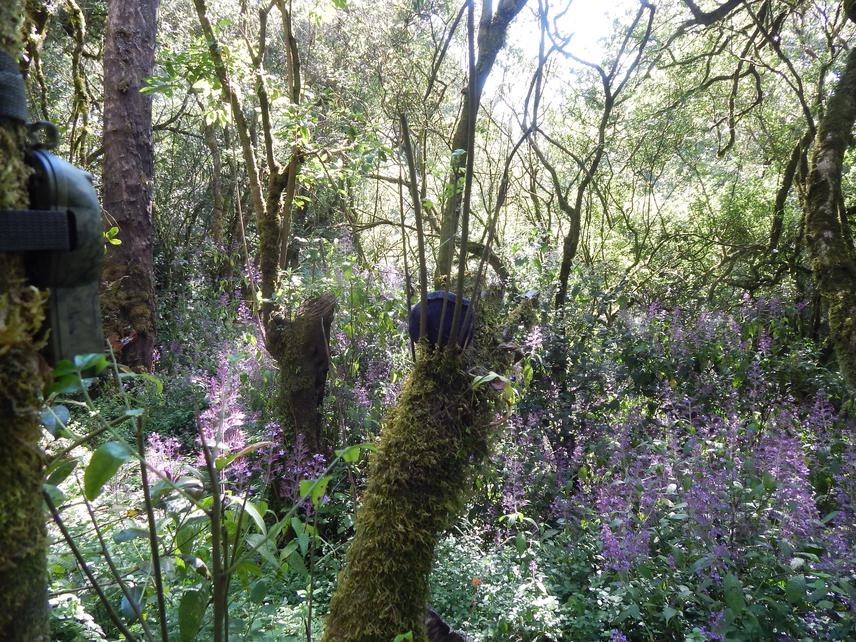Eric Djomo Nana
Other projects
10 Sep 2015
Enhancing Livelihoods around the Mt. Cameroon National Park in Order to Increase Compliance with Management Policies
In this project, our goal is to determine the selection pressure on avian life history traits by updating the conservation status of species and increase community awareness and commitment on the conservation of montane birds.

Camara trap on artificial nest.
Understanding the capacity of natural populations to adapt to their local environment is a central topic in conservation biology. This project aims to determine the selection pressure on avian life history traits and their conservation status on Mt. Cameroon. Specifically, we aim to:
i) update the conservation status of species
ii) increase community awareness on the conservation of montane birds
iii) help develop alternative sources of income for the area.
The project activities that will be conducted include:
i) field experiments as well as household surveys to understand local people’s attitudes towards bird conservation
ii) training of youths and community leaders
iii) information dissemination
iv) community support building.
The study will be carried out at six different elevations in the south-western part of Mt. Cameroon from November 1st 2013 to March 30th 2014. From November 1st to 7th, we shall visit local authorities (local chiefs and administrative authorities) and have introductory meetings as well as networking with local NGO’s. From November 8th to 18th will be sensitization campaigns in local schools and village meetings. House surveys will be carried out to assess the local people's attitude towards bird conservation as well as to assess the level of dependence of the local people on the forest area. At each elevation, we shall also survey the forest for hunter traps and cartridges. From November 20th will begin field work. We shall use artificial avian nests to estimate juvenile mortality rate. We shall place 150 artificial nests at each elevation and expose three sets of nests; bare-ground (a small depression in the soil), cup-ground (10cm above ground fixed to herbs), and cup-shrub nests (1m above the ground fixed to vegetation). The distance between neighbouring triplets will be 50m. Each nest within the triplet will be 10m from the closest one and each triplet marked with red tape tied away. Geographic coordinates will be taken. We shall place one quail egg in each nest and check the nests after 10 days to record their fate. To estimate adult mortality rate from parasitic load, we shall use mist netting to capture birds. Blood samples will be collected from the brachial vein and stored in 99% ethanol for molecular analysis in the lab. We shall also determine prevalence and abundances of parasite vectors along the gradient. This project will provide conservation management with information necessary to carry out the right conservation action.